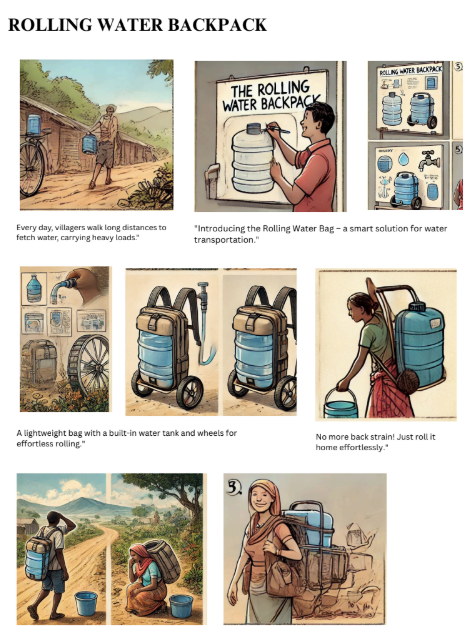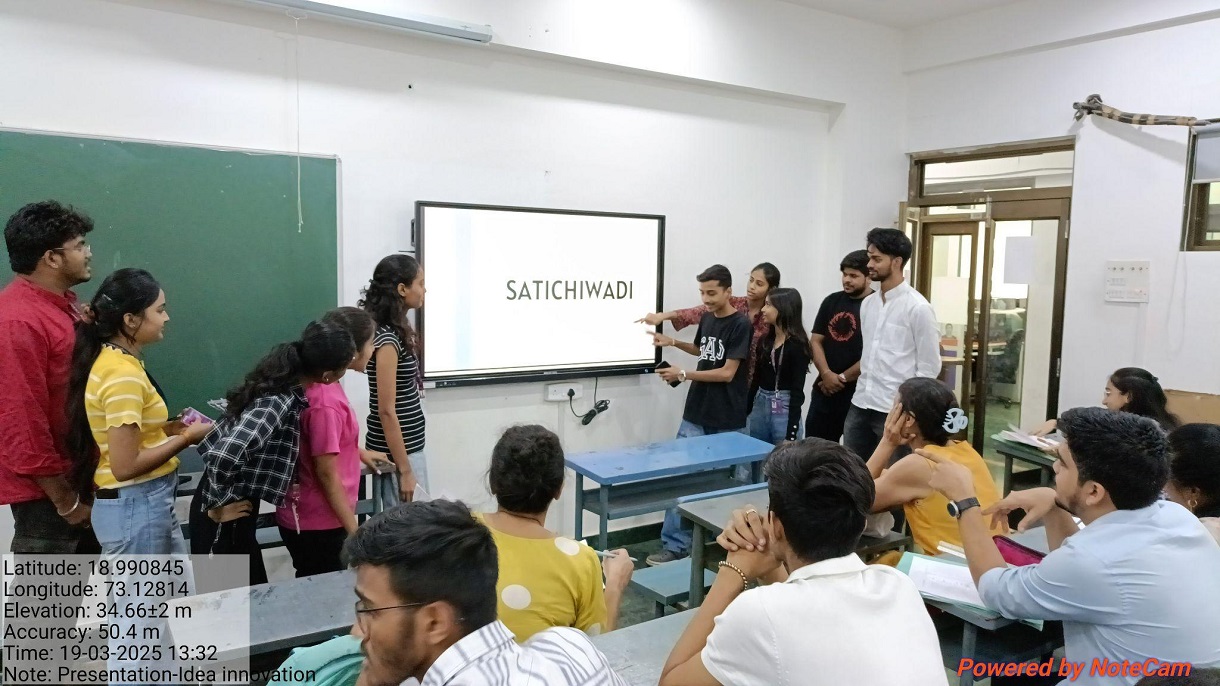| Semester | Sem IV, B. Arch |
| Year | 2024-25 |
| Days | 5 |
| Year | 2nd |
| Venue | Studio (PICA Campus) |
| Faculty Co-ordinator | Prof. Neha Deshpande |
| Accompanying faculty | Prof. Neha Sayed, Prof. Prathamesh Deshpande, Prof. Jagrati Sehgal |
Introduction:
Innovation is necessary in everyone’s life. At every level in every kind of organization, design thinking provides the tools you need to become an innovative thinker and uncover creative opportunities that are there. Design thinking brings together what is desirable from a human point of view with what is technologically feasible and economically viable. Through a series of discussions and presentations, students will be ready with the problem identification and solution. The class was divided into groups to achieve different innovative outputs.
Also Unnat Bharat Abhiyan inspired vision of transformational change in rural development processes by leveraging knowledge institutions to help build the architecture of an Inclusive India is initiated through this Elective to have a paradigm shift in academic and research programs of the country.
Objective:
To become an innovative thinker and uncover creative opportunities that are there.
- To identify problems in day to day life in the surrounding village and find an innovative solution for it.
- To identify & select existing innovative technologies, enable customisation of technologies, or devise implementation methods for innovative solutions, as per the local needs.
- To understand the process from imagining a product to its manufacturing and patenting.
- Students shall learn how to bring their ideas from concepts and prototypes to actual products and services that are of value to potential users and customers.
- To provide suitable support and a platform for realization of the innovative research ideas towards finding solutions to the problems being faced at present in village
- To engage the faculty and students of Higher Educational Institutions in understanding rural realities.
- To leverage the knowledge base of the educational institutions for effective implementation of various government programmes.
Methodology and probable output:
Students were introduced to what is an Idea, innovation and how to think beyond through examples and discussions. They were suggested to note the following points while working on the assignment.
Technically feasible: They can be developed into functional products or processes;
Economically viable: The business can afford to implement them;
Desirable for the user: They meet a real human need.
Problem Identification
To begin with, students were asked to identify multiple problems in their surroundings. These problems were discussed with sketches and references.
Solutions
Step 2 was to come up with solutions to those identified problems. The intention of these solutions was to have innovations in their ideas acknowledging the economical and sustainable factor . Students were expected to add innovations to their solutions. These ideas were discussed in detail and modified further. Students also worked on the manufacturing process such as the materials to be used and costing involved in the process for the shortlisted solutions.
Course Outcome:
At the end of the course student shall learn
Creative Thinking Skills: Students develop enhanced creative thinking abilities, allowing them to generate new and innovative ideas. This includes techniques for brainstorming, idea generation.
Design Thinking: Students gain an understanding of the design thinking process and how it can be used to drive innovation. They would be able to have a problem-solving attitude.
Idea Evaluation: Learn how to evaluate and assess the feasibility and viability of ideas. This involves understanding market trends, customer needs, and conducting basic feasibility analysis.
Collaboration and Teamwork: They should understand how to work in teams, leverage different strengths, and foster a creative and inclusive team culture.
Communication and Pitching: Participants should enhance their communication skills, particularly in presenting and pitching their ideas. They should learn how to effectively communicate the value proposition of their innovative ideas to different stakeholders, such as investors, customers, or management.
Innovation Management: An understanding of the principles of innovation management, including the identification and prioritization of ideas, resource allocation, risk management, and the implementation and diffusion of innovations.
Ethical Considerations: Students shall develop an awareness of the ethical implications of innovation and understand the importance of responsible innovation.
Day 1:
Introduction to the elective- Group discussion On the 1st day, Prof. Neha Deshpande addressed the class regarding the objective and outcomes of this workshop and informed them how that will help them in their holistic development. Later, few terminologies like copyrights, trademarks, patents were discussed with the students by Prof. Neha D, Prof. Jagrati and Prof. Prathamesh. Furthermore, how to identify problems and generate them into possible unique solutions with ideas development and conceptual sketches were shown.
After the class discussion, students were divided into groups with allotment of the villages as addressed. Group discussions were initiated and they were asked to identify problems in the respective villages which could be resolved by providing innovative solutions in terms of a product/ app development.
Day 2:
Guest Lecture & Discussion
Title: Problem Solving & Transformation of Ideas into Concepts (Guest Lecture series) Guest speaker: Ar. Purvi Dalal
Topics covered in the guest lecture were:
- Problems and need based problems, challenges faced by the villagers.
- Concept of conscious living in both rural and urban areas.
- Dieter Rams design principles
- Product design methodology and presentation of drawings
Brief takeaway of the event/lecture
The lecture majorly focused on identification of problems to resolve in the rural area as per the Elective requirement. Problems related to lack of basic needs, technology, challenges faced, hygiene were discussed.
The concept of conscious living was new to the students which they learnt in the process in both rural and urban areas.
Presentation was given on how these problems can have possible solutions in terms of product design/ app development. A group discussion with the guest was done regarding their selected site and how to transform these problems into solutions.
Dieter Rams 10 principles of Design were introduced to the students.
Also the presentation included some examples of presentation drawings of actual product design that were executed, giving students ideas about how the research and how market study plays an important role. In addition students also learn to present their sketches and initial conceptual ideas into design.
Detailed Guest lecture report submitted.

Day 3:
Lecture on IPR & Students Presentation
Prof. Prathamesh Deshpande conducted a lecture on IPRs. He discussed the differences between copyright, patents and trademarks. Later a few examples were shown to the class which helped the students understand better. Brief lecture was given on Intellectual property rights, how ideas are converted to innovative concepts. Types of IPRs, need, ideation process, invention disclosure are some of the topics covered under this lecture. At the end of the session group assignment was assignment to the students where in they had to study the different Right of ownership of properties included
- The copyright act 1957
- The patents act 1970
- The trademarks act 1999
- The geographical indication of goods act 1999
- The design act 2000

After the lecture, students presented their work in front of the class and reviews were given by the faculty members. Possible solutions in the form of sketches and storyboards were presented by each group. Out of the 3 problems & their solution students were asked to develop a prototype and design drawing detail for their shortlisted solution.
Day 4:
Lecture on Patenting
A lecture on patents was conducted by Prof. Sarojini Lohot to provide an in-depth understanding of the importance and process of patenting inventions. The session covered key topics such as the types of patents, the patent application process, and the rights granted to patent holders. It also highlighted the significance of patents in protecting intellectual property and fostering innovation. The lecture emphasized the legal, technical, and business aspects of patents, helping students understand how patents can be a valuable asset in various industries. Through real-world examples, the session offered practical insights into navigating the complexities of patent law and its impact on innovation.
Ma’am, in her presentation also informed that the design patents should benefit the Society, it should be Economical and Sustainable. At the end of the session an assignment was given to the class as a group to write a proposal for their generated solutions.
Hardcopy print/ hand written Proposal
Should include Title, purpose, user group, proposal for patenting (idea/ entire app/ design/ mechanism/ etc.)
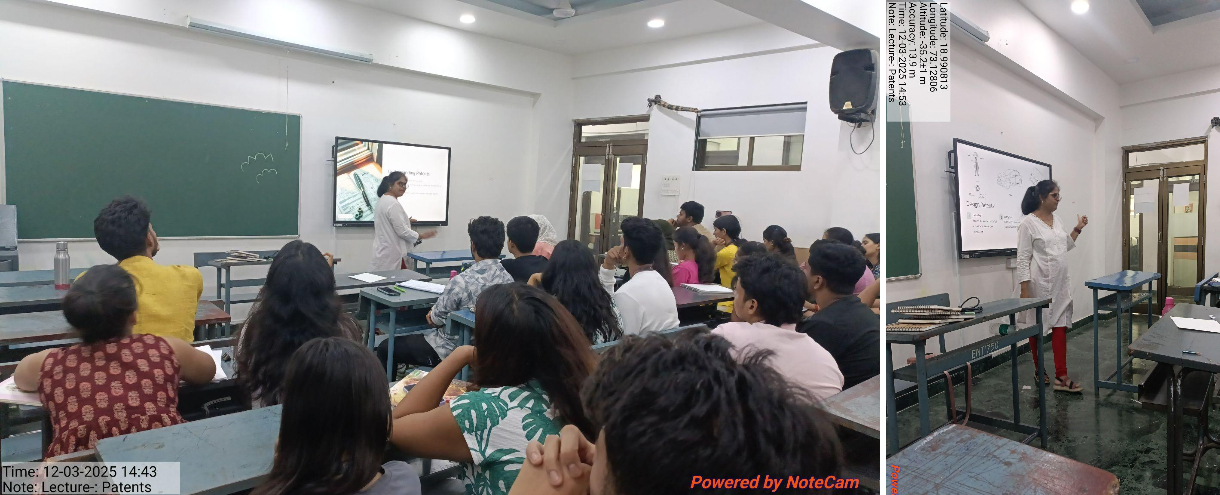
Day 5:
Final Presentation
On the last 5th day, Final work of students was presented in PowerPoint presentation format. Basic study models were also displayed by some of the groups.
Prof. Sudnya Mahimkar, Prof. Sarojini Lohot and Prof. Neha Sayed were the jury members invited for the final presentation. Students were asked to explain their identified problem and solutions with respect to ideas, design process and innovation. Students presented their storyboards, detailed drawings and presentation that included:
1. Introduction to the site
2. Identified problem statement
3. Need and description of potential impact
4. Potential Solution with initial idea, concepts sketches
5. User group, how is it benefitted
Hardcopy print/ hand written Proposal
Overall, the workshop became very interesting as students also enjoyed the process and worked hard to complete the assignments.
Assignment 1 – Problem Identification
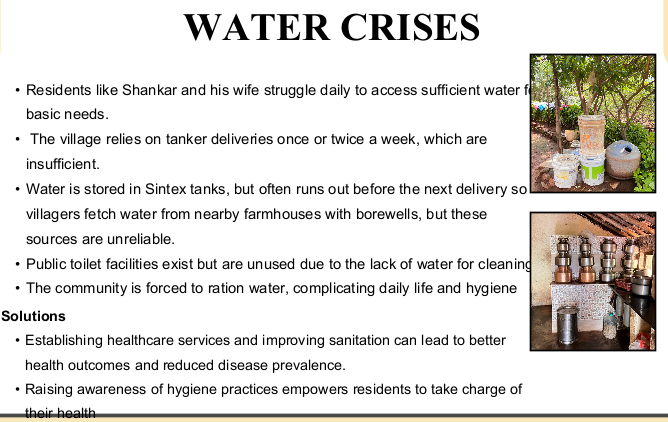
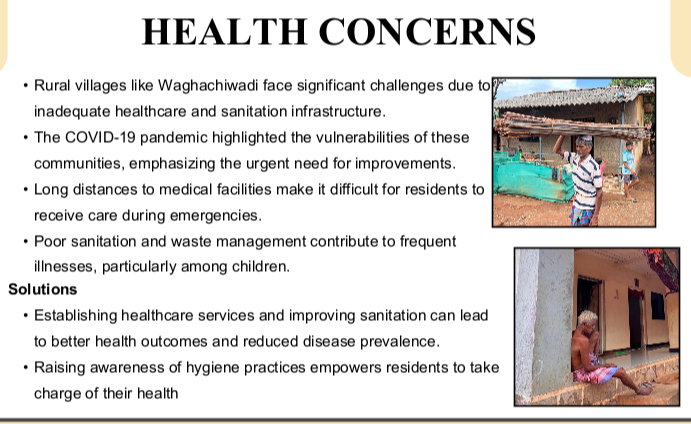
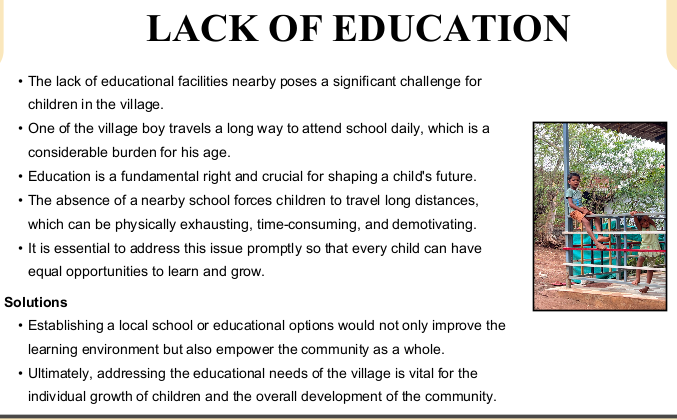
Assignment 2- Solutions
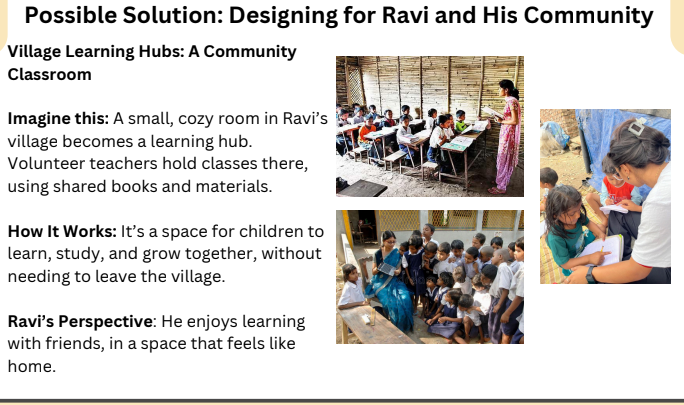
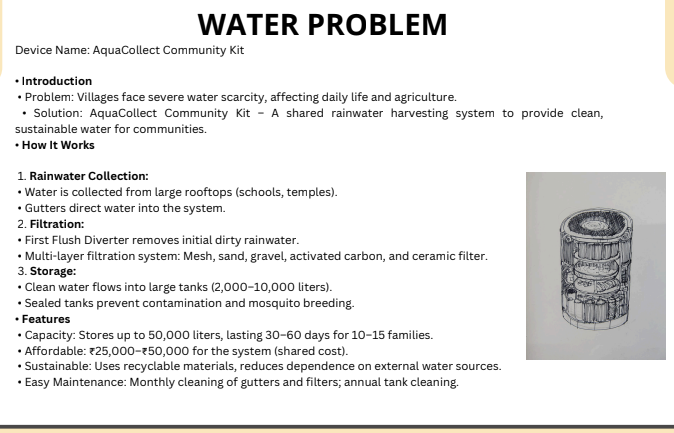
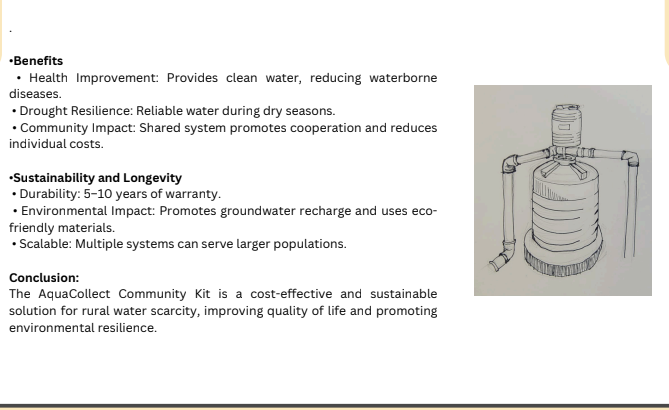
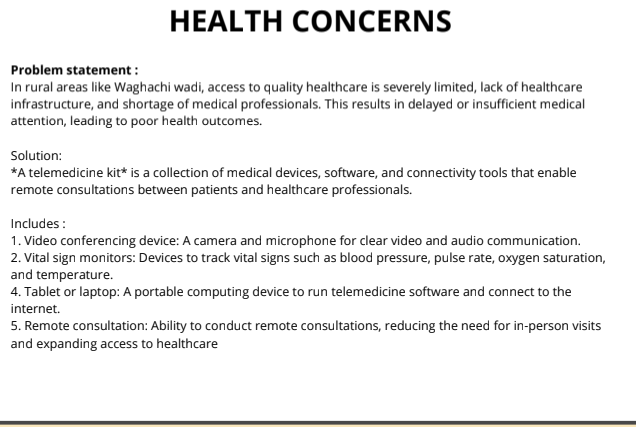
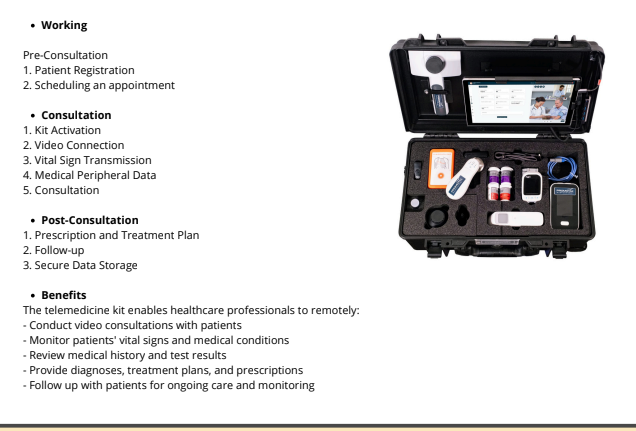
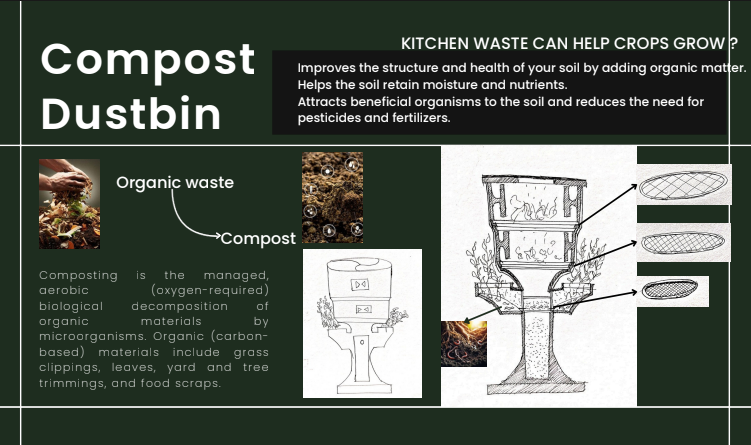
Assignment 3: Process Diagram
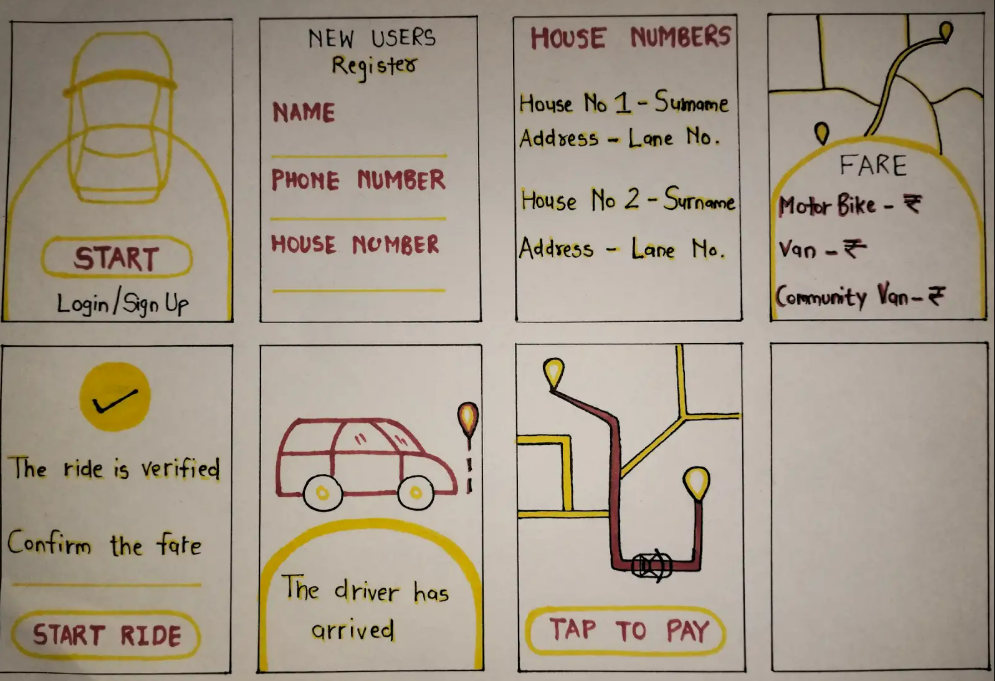
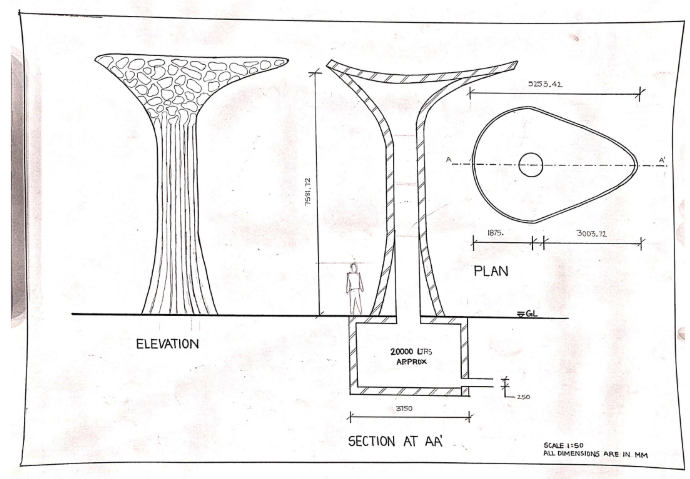
Assignment 4: Storyboard
